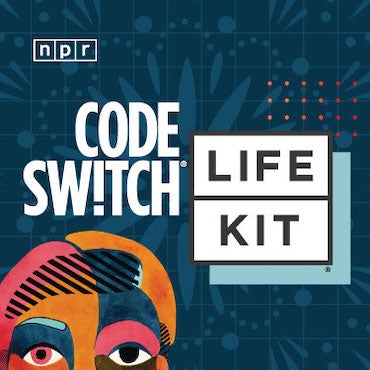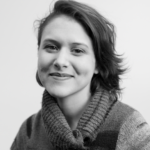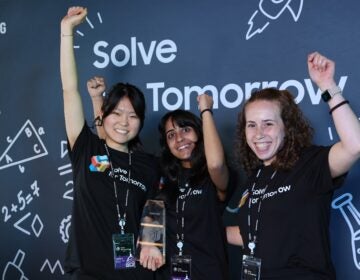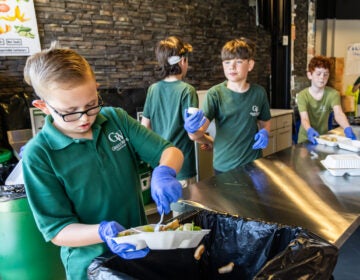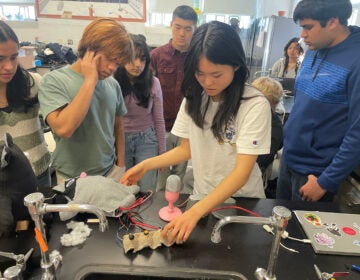Central Bucks students blast off into STEM with NASA TechRise Challenge
Lenape Middle School students built a rocket-powered lander that NASA will test out.
Listen 1:10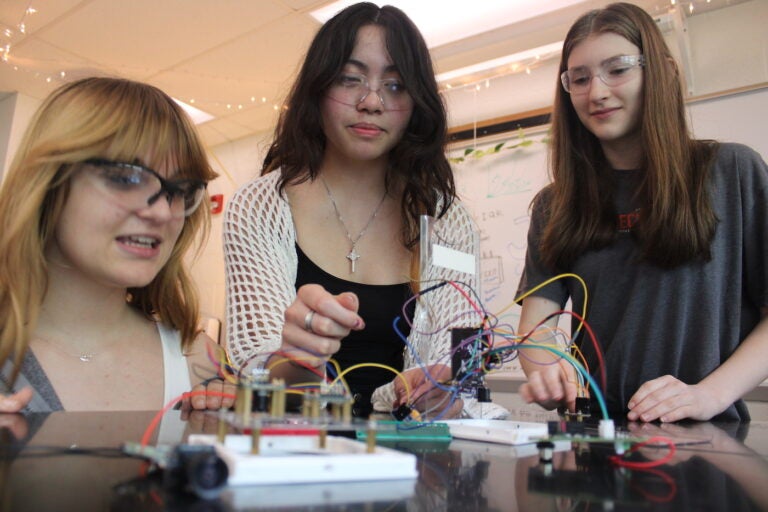
From left, Mia Sasser, Kayleigh Razon and Emma Lofts examine their experiment for the NASA TechRise Challenge. (Emily Neil/WHYY)
From Philly and the Pa. suburbs to South Jersey and Delaware, what would you like WHYY News to cover? Let us know!
Mia Sasser, 15, has always dreamed of working in space science. The ninth-grader’s room is plastered with photos of rovers and images from the Hubble Space Telescope.
“This has been my passion since I was little,” Sasser said. “I love astronomy, space, engineering.”
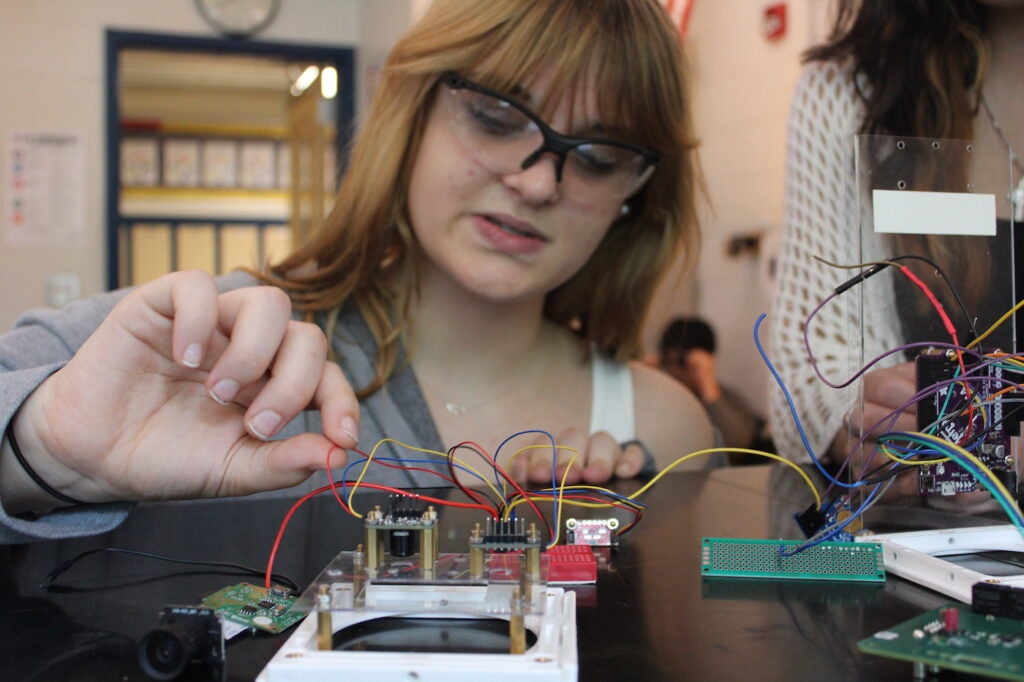
Thanks to the NASA TechRise challenge, Sasser and three Lenape Middle School classmates are taking a step that might blast them off into STEM careers.
The Central Bucks School District students’ team was one of 60 nationwide who won the chance to participate in the challenge. Now in its third year, the competition is designed for sixth- through 12th-grade students. The team worked with Jennifer Conver, a gifted support teacher at Lenape Middle School, and mentors from NASA and built a rocket-powered lander that NASA scientists will test on a surface designed to look like the moon.
Sasser and fellow ninth-graders Kayleigh Razon, 15, Emma Lofts, 15, and Aanika Oka, 15, have worked together since January to build what they call the SOBIE experiment. SOBIE stands for surface object identification.
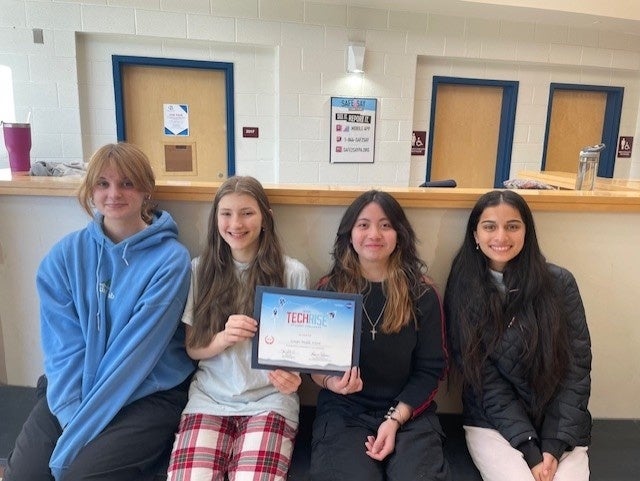
The payload features a dash camera with proximity sensors and UV sensors that measure GPS location and other data. Once placed on the rocket, the lander will scan the surface and store data on an SD card, which team members will use to sort through the data manually once it’s returned to them.
“So basically, we have this payload, right, and we’re filling it with different components that are going to be able to identify objects over a surface area,” Lofts explained. “We’re going to send it out and they’re going to then start the experiment. And then it’s going to take in data and then identify different anomalies within that path.”
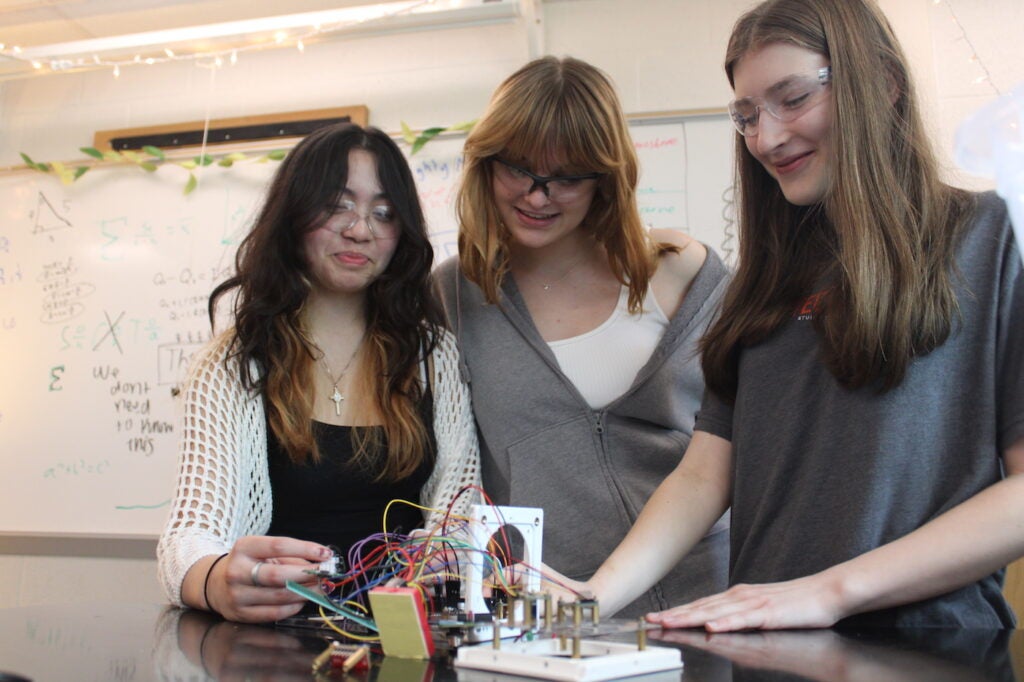
Sasser said with the dashcam, GPS and other sensors, they will be able to map out where certain anomalies and objects are. The next step, if they were going to continue to build out the experiment, would be to create an algorithm so that data could be processed automatically without the students having to analyze and map it manually.
This kind of challenge is especially important for girls interested in exploring STEM and science, Razon said.
“I feel like we need to build the foundation for where girls feel welcomed and the STEM community,” she said. “That’s what I really hope this project shows is to open more opportunities to little girls who are more curious about what areas they want to do when they grow older.”
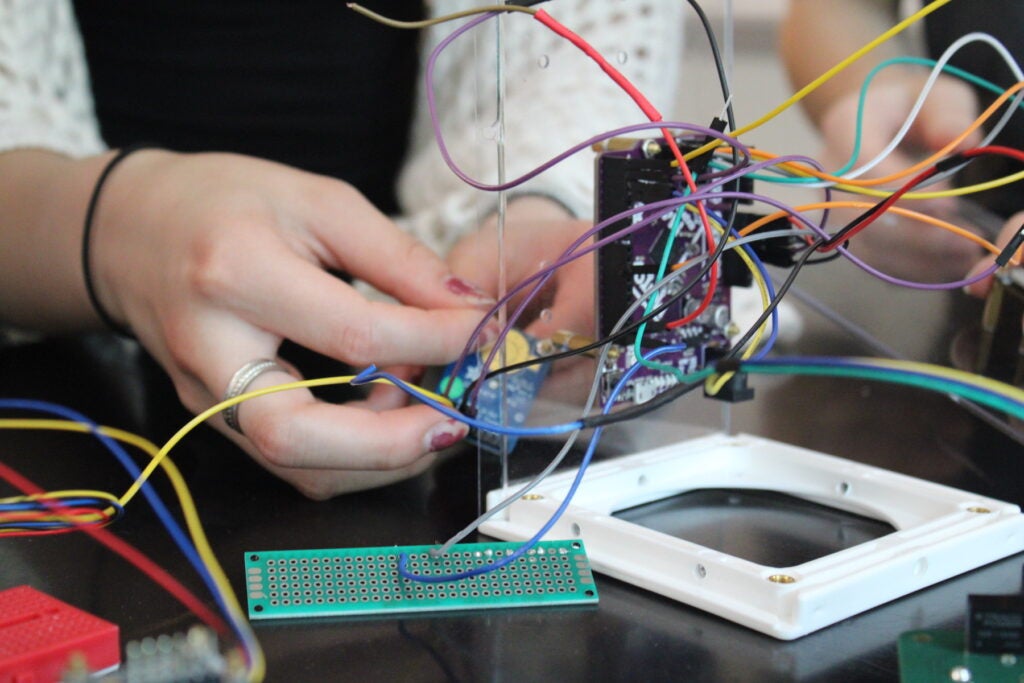
The students agreed that many elements of building the experiment were “intimidating” at first — they had to explain to this reporter what the term “soldering” means. But they said the process and support from Ms. Conver, their teacher, and Ani Williams, their mentor with NASA TechRise Future Engineers, helped demystify the process.
“It’s really intimidating to look at and understand. But I think once you start learning about it, it becomes really simplified,” Sasser said. “People are always discouraged from it, it seems like a really complicated thing to do, but … everyone can learn these kinds of things.”
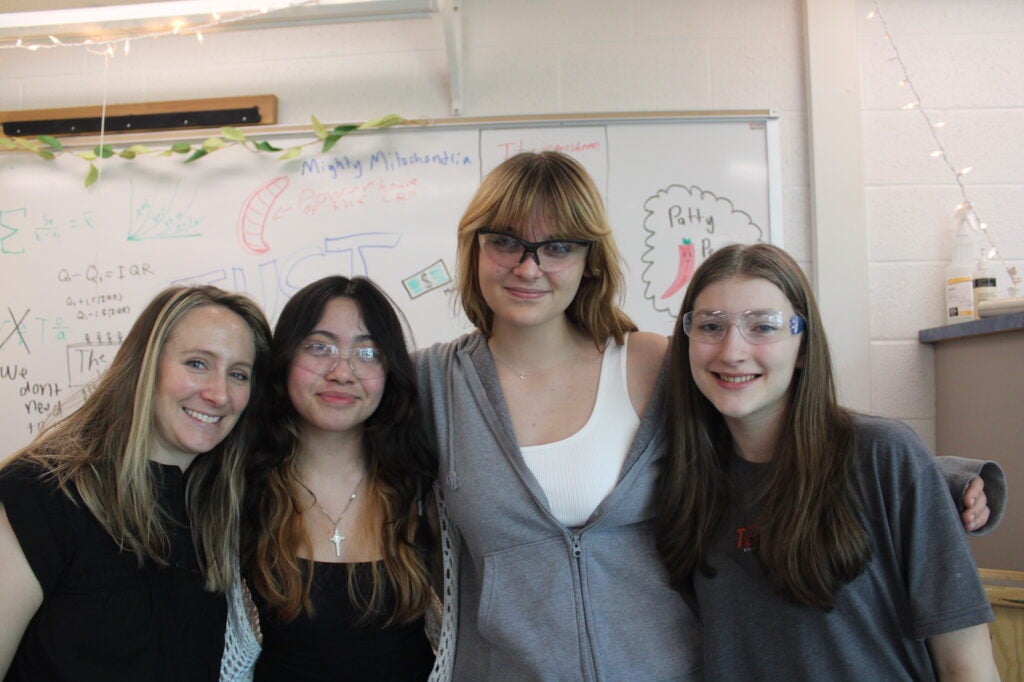
Conver said she is “really proud” of the students who gave up their free time during school hours to complete the experiment.
“It’s kind of amazing to think that they’re doing something that’s so advanced … that is going to be involved with something NASA-related,” Conver said.
Williams met with the students virtually at least once a week to provide support.
“They ask a lot of really thoughtful questions,” she said. “Sometimes you’ll teach a group, and they just sort of take what you say and do it. But they really want to learn why and how and get a better understanding of the experiment, which I love so much.”
Williams said the program exposes kids to a variety of career fields, and helps develop“soft skills,” such as working in a team, critical thinking, presenting a project and more.
The students agreed they are all interested in pursuing more STEM opportunities after this experience.
“It kind of opened the door to a whole world that I didn’t really know much about before. So I’m excited to see where this takes me,” Lofts said.

Saturdays just got more interesting.
WHYY is your source for fact-based, in-depth journalism and information. As a nonprofit organization, we rely on financial support from readers like you. Please give today.
